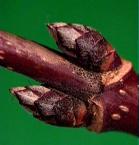Nature this Month: March

Some birds that have wintered in more southern states, such as robins and red-winged blackbirds begin returning north.
The sap in the sugar maple tree begins to flow. In late winter, a tree’s sap begins flowing up through the trunk’s veins from their roots where it remained unfrozen all winter. The returning sap feeds the tree’s swelling buds, which soon will open into leaves. The sap in sugar maples has a higher sugar content than that in other trees. Long ago Native Americans discovered it could be collected and boiled down to form a rich sugary syrup for eating. Two or three small tubes inserted one to two inches into a tree can divert some of the sap into hanging buckets without harming the tree. It takes almost 40 gallons of sap to make 1 gallon of syrup.
- Early spring flowers, including snow drops and crocuses, now bloom
- The woolybear caterpillar is still asleep
- On warmer days, chipmunks may awaken for a while from their winter sleep and come out of their holes
- Roads and streams become muddy as ice and snow melt
- The cecropia moth still sleeps as a pupa inside its cocoon
- Buds on trees begin to swell. Silver and red maple, pussy willow, poplar and elm are in flow
The first step in identifying a leafless tree is to determine whether the tree has alternate or opposite growth pattern. If the tree is short enough, look at the twigs and notice whether the buds occur in pairs on opposite sides of the twig. If the twigs are out of reach, look up into the canopy and see if there are paired twigs. If there are some, then the tree is opposite. (Note that one of the pair often breaks off.) If there are none, it is alternate. There are few deciduous trees with opposite twigs, buds, and leaves. It does not take long to be able to distinguish the lacy, meandering twig pattern of maples from the strongly upward thrust of the stout twigs of ash trees.
Alternate bud pattern

Opposite bud pattern

- By the end of the month, snow drops, crocuses, and early daffodils are in bloom
- Earthworms come up to the surface from underground, Worn castings can be found on the ground.
- The March full moon has been called the Worm Moon by some Native American tribes.
- March 21 is the first full day of Spring. Since December 21, the days have steadily been getting longer and the nights shorter. It is also called the Spring Equinox, for on this day the lengths of day and night are nearly equal.
Carry your very own Nature Study Journal on your adventures.
